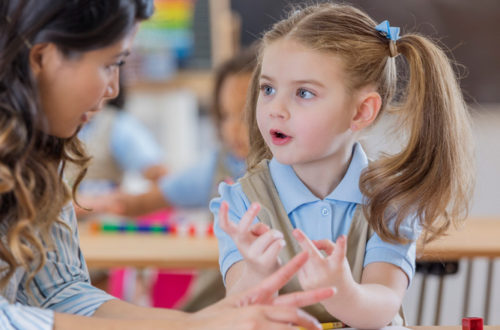Journal of the Mathematics Council of the Alberta Teachers’ Association
Volume 31 Issue 3, September 1993
By the time you receive this issue of delta-K, you will undoubtedly be back at school after a well-earned summer break. I hope your summer was enjoyable and restful, leaving you ready for an exciting and challenging new school year!
This issue of delta-K focuses on using computers and calculators in the mathematics classroom. At times, it seems difficult to know how to use these technological devices effectively in our classrooms. Because they are so common in our general society, they will inevitably become part of our teaching reality. But this realization does not help us learn more about how to employ them effectively. After all, tallying grades using a computer seems distant from designing and developing learning opportunities for students using the same computer. And, merely amusing children with computer or calculator games does not guarantee that they will benefit from the experience. These issues and many more are pursued in the pages ahead.
Our leadoff article was contributed by Dr. Marlow Ediger who investigates several issues surrounding implementing computers in mathematics classrooms. His suggestions may form a helpful mind-set for teachers interested in incorporating computers more fully into their instruction.
Craig M. Findlay talks about computers from the perspective of one highly familiar with these machines. He describes some surprising research findings that contradict his prior perceptions.
J. Dale Burnett has contributed a summary of his presentation at the 1992 Mathematics Council annual conference in Medicine Hat. In his article, he introduces us to the Mathematica program and to the implications that this program and others like it have for the mathematics curriculum.
John G. Heuver leads us through two investigations of interesting mathematical problems, using the computer (and the Pascal programming language) as his context for exploration.
This issue has two articles in the recreational mathematics section. The first article by Bonnie H. Litwiller and David R. Duncan investigates the probability of certain card combinations in a dealt hand. In the second article, Sandra M. Pulver describes a summer-time activity designed for investigating familiar polyhedra.
The final section deals with some teaching ideas. The first article by Geri Crossman explains an application in which students are encouraged to calculate the cost per serving of foods in the supermarket. She also lists several ways the home economics and mathematics curricula may be integrated. In the final article, three authors present a collection of three games. Each game centres on using calculators to teach estimation and mental computation.
Enjoy!
A. Craig Loewen
1 – 2
3
A. Craig Loewen
4 – 7
Computer Use and the Mathematics Curriculum
Marlow Ediger
8 – 11
Learning About Computers and Mathematics: A Student Perspective
Craig M. Findlay
12 – 15
Computer-Based Mathematics Notebooks
J. Dale Burnett
16 – 17
Two Computing Exercises with Mathematical Overtones
John G. Heuver
18 – 19
Bonnie H. Litwiller and David R. Duncan
20 – 22
Sandra M. Pulver
23 – 24
Geri Crossman
25 – 30
Calculators, Baseball and Mathematics: A Winning Team
A. Craig Loewen, Dino Pasquotti and Lon Bosch
31



